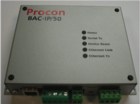The BACnet solution for the effective management of building systems

Open functionality with no cost premium — the BACnet protocol for building systems.
The BACnet protocol for building systems does not impose a cost premium for achieving open functionality. Steve Loughney explains.Energy saving, comfort and business continuity are key elements of a building manager’s strategic plans. To successfully achieve all of them, especially with the pressure to deliver with fewer people, access to real-time data from all building systems is essential (e.g. HVAC, generators, lighting etc.) in order to make truly informed decisions. It has been possible to install integrated building systems for many years. However, as manufacturers used their own communication protocols, these systems relied on interfaces that translated one protocol into another. These worked well, but they could be costly to install and have relied on the manufacturers of devices maintaining and supporting their protocols for the long term.
Standard protocols To overcome this problem, manufacturers and specifiers have been encouraged to use standard protocols so that devices from different manufacturers could be connected directly together to share data. The problem has been that there are a number of standards to choose from, and they do not all support the functionality that we all expect from a modern building-management system. The Modbus protocol has been well supported for process controllers, meters, generators etc., and continues to be a solution that is successfully integrated into building-management systems. Part of its acceptance was that, unlike licensed technology, manufacturers could speculatively develop products without too much investment. Products using it have been successful. However the Modbus protocol does not go far enough in its standardisation and it is rarely the case that Modbus devices from two manufactures can talk directly to each other.
BACnet In recent years though, BACnet has been gaining popularity. BACnet (Building Automation and Control network) was developed specifically for building automation by ASHRAE — the American Society of Heating, Refrigeration & Air-Conditioning Engineers. It is now an internationally recognised standard (EN ISO 16484-5) and a European CEN standard, all of which is an important comfort factor for many specifiers and building owners. BACnet is also being extended to encompass security, access control and even fire-safety systems. Manufacturers are interested in BACnet as, like Modbus, they can speculatively invest in developing products without too much investment in licensed technology. Installers of equipment like the way that the BACnet protocol is a more sophisticated solution allowing BACnet devices to easily share data and support high-level BMS functionality such as alarms and time schedules. They also prefer the fact that, unlike other standard protocols, BACnet does not require a central network design tool to ‘bind’ devices together — giving more flexibility in the approach to designing and installing a network.
 |
Proprietary communications protocols can be converted to BACnet using a gateway. This module, for example, enables Mitsubishi Electric’s G50 controller for air conditioning to be connected to a BACnet network. |
For specifiers, there is a range of tools that allows them to define the functionality and performance that is required. An example is that BACnet can operate with a number of transport media, including RS232, MS/TP, LonTalk, ARCNET and Ethernet. These various media also allow for further variations, such as fibre optic and wireless communications. For peace of mind the BACnet protocol requires manufacturers to provide documentation on the level of support that they have built into their device. The detailed definitions of the BACnet device properties and functionality are described in a Protocol Implementation Conformance Statement or PICS.
Conformance However this documentation does not guarantee conformance to the standard, so the BACnet Manufacturers Association (BMA) has established BACnet Testing Laboratories (BTL) to provide independent confirmation that a device truly conforms to the standard. Devices that have successfully gone through this testing can carry the BTL logo. When specifying a project, an issue that needs to be considered is whether the devices to be supplied are native BACnet or whether they require a gateway to convert from another, possibly proprietary, protocol. Native BACnet means that open communication is a built-in property of the system and requires no additional hardware, software or services. Native also means that all objects and services referred to in the standard (and their functional profiles) are fully supported and that compliance with the standard is verified Non-native systems are normally devices using a manufacturer’s proprietary protocol, which are connected to an interface module that converts the proprietary communications to BACnet. Although this approach does bring the equipment into an overall BACnet system, it will need the potentially costly interface module, and the manufacturer will maintain and support its proprietary protocol for the long term. Also, non-native systems normally only support the very basic BACnet functionality, typically allowing read/write access to a subset of data that is in the device. This could mean that the data that the needs of a building manager may not be accessible. There is no doubt that BACnet is gaining a great deal of interest. In practice, there is no premium involved in installing BACnet devices, even when open functionality is not required. To this end, BACnet is going to an important method of providing the valuable data required in building management.
Steven Loughney is technical director with Siemens Building Technologies
Related links:










